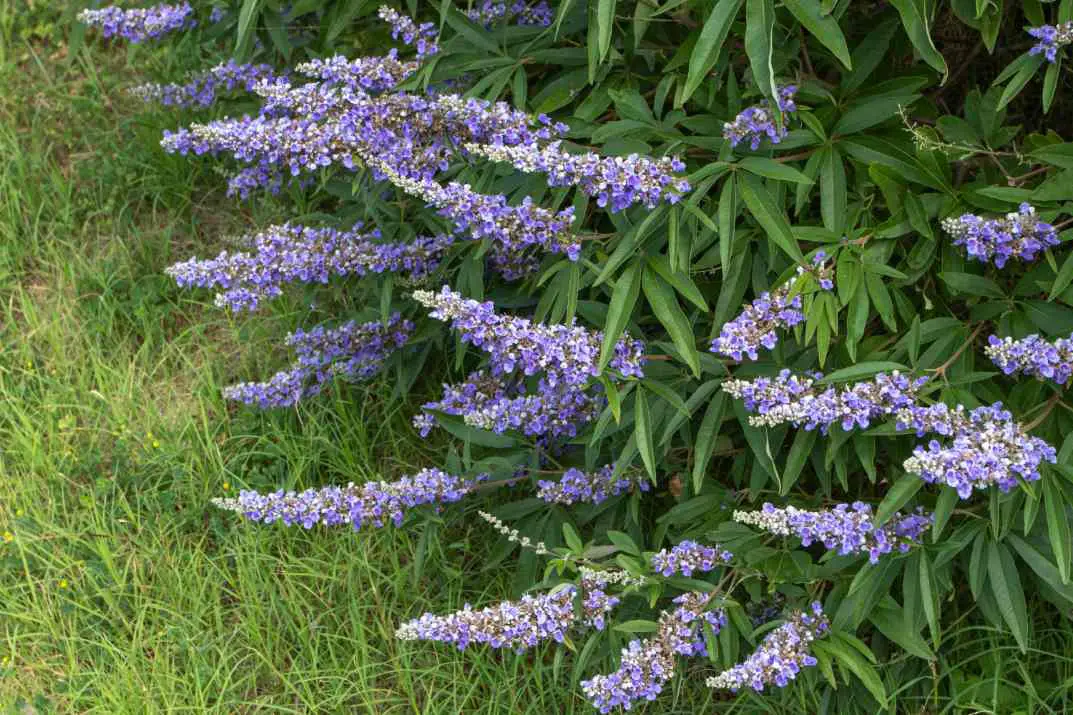
Lavender is a beautiful, fragrant flower that can brighten up any space. Unfortunately, sometimes lavender can droop and become lifeless. Luckily, there are a few simple steps you can take to fix drooping lavender and restore it to its former glory.
Watering your lavender regularly, providing it with adequate sunlight, and using a fertilizer can help keep your lavender looking its best. Additionally, if your lavender is in a pot, you may need to repot it in a larger pot with fresh potting soil to ensure it has enough room to grow. With these simple steps, you can easily fix drooping lavender and keep it looking vibrant and healthy for years to come.
Causes of Lavender Drooping
Here are some potential causes for lavender drooping:
- Overwatering: Lavender prefers drier conditions. Overwatering can lead to root rot, which can cause the plant to droop. The soil should be allowed to dry out between waterings.
- Underwatering: While lavender is drought-resistant, it still needs water. If the plant is not receiving enough, it may begin to droop.
- Poor Drainage: Lavender does not like to sit in wet soil. If the soil doesn’t drain well, the roots can become waterlogged, leading to root rot.
- Too Much Fertilizer: Lavender doesn’t require a lot of nutrients. Over-fertilizing can damage the roots and cause the plant to droop.
- Diseases: Root rot, fusarium wilt, and other fungal diseases can cause drooping. Regularly inspect plants for signs of disease and treat accordingly.
- Pests: Insects such as whiteflies, aphids, and spider mites can suck the sap out of lavender, causing it to droop. Regularly inspect the plant and treat any infestations early.
- Harsh Weather Conditions: Extremely hot or cold temperatures, strong winds, or unexpected frosts can stress lavender plants, resulting in drooping.
- Transplant Shock: If you’ve recently transplanted your lavender, it might experience some shock, especially if not done at the right time or without proper care.
- Improper Pruning: Lavender benefits from regular pruning to encourage bushy growth and prevent woodiness. However, over-pruning or pruning at the wrong time of year can stress the plant.
- Soil Conditions: Lavender prefers slightly alkaline, well-draining soil. If your soil is too acidic, it might stress the plant.
- Sunlight: Lavender is a sun-loving plant and requires full sunlight for a good portion of the day. If the plant is in the shade or not receiving enough light, it might droop.
To help your drooping lavender plant:
- Check its watering schedule and adjust if needed.
- Ensure that the soil drains well.
- Reduce or eliminate fertilizer if you’ve been using it frequently.
- Check for signs of pests or disease and treat as necessary.
- Protect the plant from extreme weather conditions.
- Ensure that the plant is receiving adequate sunlight.
By addressing any potential issues and providing the appropriate care, your lavender plant can recover and thrive.
Preparing Your Lavender Plants for Better Health
Lavender plants can add a natural scent and tranquility to your home, but it takes some effort to keep them healthy.
Proper preparation is key for keeping your lavender plants looking and smelling their best. Make sure to plant them in an area with plenty of sun and well-draining soil.
Prune away any dead or wilted leaves as they appear and water them regularly.
Fertilize your plants with a balanced fertilizer once a month during the growing season.
Finally, make sure to harvest the flowers before they become too dry to keep your lavender plants looking and smelling beautiful all year round. With the right preparation, your lavender plants will be a vibrant addition to your home.
Watering and Fertilizing for Maximum Lavender Health
Lavender is a beautiful and fragrant herb that can be used for both decorative and medicinal purposes, but to keep it healthy and thriving, it must be properly cared for.
Watering and fertilizing are two of the most important ingredients to lavender health. Watering your lavender regularly will help it absorb nutrients and keep it looking its best.
Fertilizing will also help ensure your lavender is getting the nutrients it needs to stay healthy and vibrant.
By combining regular watering and fertilizing, you can maximize the health of your lavender and enjoy its beauty for many years to come.

Strategies to Encourage Healthy Growth
We all want to see our businesses flourish and grow, but the reality is that it takes time and effort to achieve that goal.
However, there are certain strategies you can employ to encourage healthy growth that will help you reach your goals faster.
This could include creating a well-defined, clear strategy for expansion, setting realistic goals, using marketing and promotional tactics to increase visibility, monitoring progress and adjusting accordingly, and leveraging resources to maximize efficiency.
By utilizing these strategies, you can ensure that your business is on the path to successful growth.
Common Pests and Diseases That Affect Lavender
Lavender is a beautiful and fragrant plant that is used in many gardens to add an inviting scent and color. Unfortunately, it is also susceptible to a variety of pests and diseases that can cause damage to the plant. Common pests include spider mites, aphids, nematodes, and whiteflies.
Diseases that can affect lavender include root rot, powdery mildew, and verticillium wilt. To prevent these pests and diseases, it is important to keep the plants well-watered and in a sunny location.
Additionally, pruning away any affected branches and leaves can help reduce the spread of disease. Taking preventative measures and addressing issues quickly can help ensure your lavender stays healthy and fragrant for years to come.
Troubleshooting Tips for Fixing Drooping Lavender
Lavender is a beautiful and fragrant flower that can brighten up any garden. However, if your lavender is drooping, it can be disheartening.
With the right troubleshooting tips, you can get your lavender back in bloom. Start by examining the soil to make sure it is moist and well-draining. If the soil is too dry, it may be time to add some water. If the soil is too wet, make sure to provide drainage.
Consider adding fertilizer to the soil to make sure your lavender is getting all the nutrients it needs. Consider trimming back the plant to help it focus on re-growing.
Lastly, make sure the lavender is getting plenty of sunlight. With these simple troubleshooting tips, you can help revive your drooping lavender and get it looking beautiful again.
FAQs About the how to fix drooping lavender
What should I do to fix a drooping lavender plant?
Answer: To fix a drooping lavender plant, check the soil and make sure it is not overly wet or dry. If it is too dry, water the plant thoroughly. If it is too wet, allow the soil to dry out before watering again. Prune away any dead or damaged leaves and stems and fertilize the lavender with a balanced fertilizer.
How often should I water my lavender to prevent drooping?
Answer: Lavender requires regular watering to stay healthy. During the summer months, water the plant every few days and during the winter months every 1-2 weeks. Make sure to check the soil moisture level before watering and only water if the soil is dry.
What type of fertilizer should I use for my lavender?
Answer: Use a balanced fertilizer, such as a 10-10-10 or 20-20-20 fertilizer, to keep your lavender healthy and prevent drooping. Apply the fertilizer every two to four weeks throughout the growing season.
Conclusion
The best way to fix drooping lavender is to ensure it gets plenty of sunlight, water, and fertilizer. If the plant is placed in too much shade, it will not be able to produce enough energy to stay upright. Additionally, if the soil is too dry or too wet, the lavender’s roots will not be able to absorb enough water and nutrients. Finally, regular fertilization will help promote strong, healthy growth which will help the plant stay upright. With the right care, your lavender should stay upright and healthy for many years.






